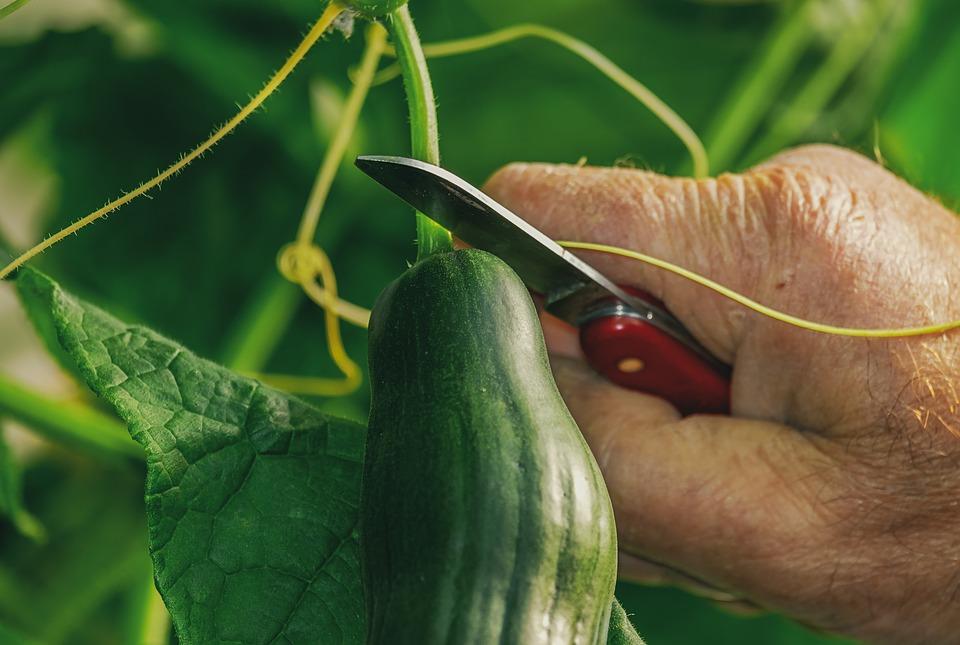
How to Grow & Harvest : Cucumbers
Did you know that cucumber plants will produce male and female flowers? The female flowers will be the flowers that produce fruit, while male flowers will typically appear first and then drop off. Cucumbers love the sun, but they are sensitive to the heat so they are best placed in an area of your garden that receives sun for the majority of the day, but will eventually receive shade once the sun begins to set.
Growing:
If possible, do your best to pick off the first round of blooming flowers from your cucumber plant so that the plant can begin producing female flowers more quickly. To encourage additional growth, do your best to regulate the temperature of the plant. Cucumber plants like the heat, but not too much. It is best to plant them in an area where they receive partial shade. When cucumber plants get too hot they will mostly produce male flowers, and the female flowers will grow bitter fruit.
Cucumbers also love growing in high quality organic matter, so we suggest adding compost to the soil every few weeks.
Cucumbers are also capable of growing tall and as you know, cucumbers can get quite heavy. If you are working in a limited space garden, you may want to provide a trellis or guide your cucumber plant to grow up the fence. This technique will reduce the amount of space that the cucumber plant takes up, but will also lift the fruit off of the ground making it less susceptible to pests and diseases.
In the peak summer with extended high heat you should apply a light layer of mulch around the roots of the plant. This will help to keep the roots cool while the plant can enjoy the sun and the mulch will trap in the moisture.
Watering:
Cucumbers 96% water, so they require a lot of water for growing. It is important to keep them hydrated during the flowering and fruiting periods. It is imperative for the taste of your cucumbers that they receive ample water during this stressful growing period or your fruits may become bitter. Water your cucumbers plants with 1-2 inches per week, the key is to keep the soil slightly moist at all times.
Do you best to avoid watering the leaves of the plant as it may encourage disease.
Pests/Diseases:
If your cucumber plant is not producing fruit, it is likely not a disease, but more so an issue of pollination. During the first few weeks of the summer, you will likely not have any female flowers produced. Eventually you will have a mix of male and female, and it is best to encourage cross pollination. Pollination of your cucumber plant flowers will encourage more cucumber growth, so if you’d like to attract bees to your plant you can spray a mixture of water and sugar onto the leaves once a week during harvest. You can also pollinate yourself by using a q tip - dip the q-tip into the center of the male flower, and then do the same with the same part of the q-tip to the female flower. You can identify the male flowers by having very long and thing stems coming from the base of the flower, females will have a larger more full looking extended bump in their stem - this bump will eventually become the cucumber if pollinated.
Harvesting:
Do your best to pick the full grown fruit more frequently to ensure your plant gives you a longer harvest. The best time to harvest cucumbers is when the fruit reaches 6-8 inches long, and you can do so by grasping the top of the cucumber and cutting it off the plant with gardening shears about ¼ inch from the vine.
If you're growing cucumbers to pickle, consider growing some dill as well. Adding fresh dill into your pickling mixture will help contribute to a well rounded fresh flavor.
Cucumbers also don’t have to just be used for eating! Blending cucumbers and using it as a facial have great benefits for your skin including reduction of puffiness & swelling, cleanse and tighten pores and antioxidants for natural anti aging.